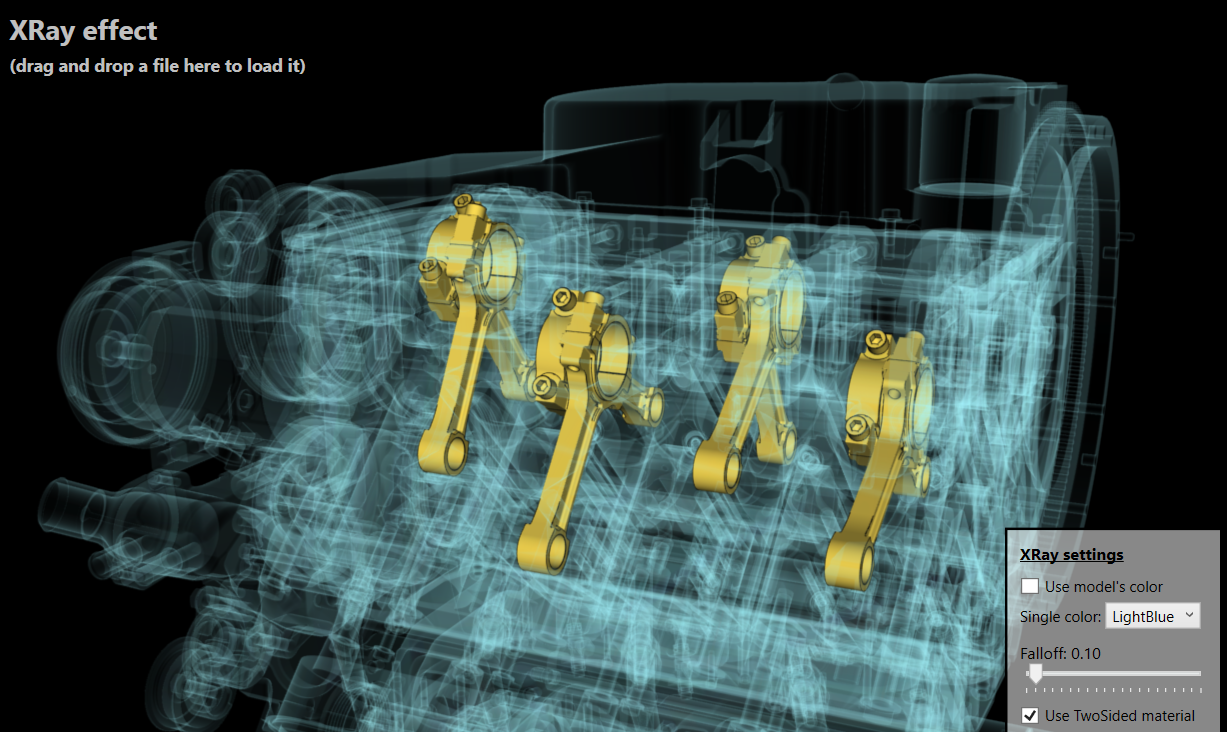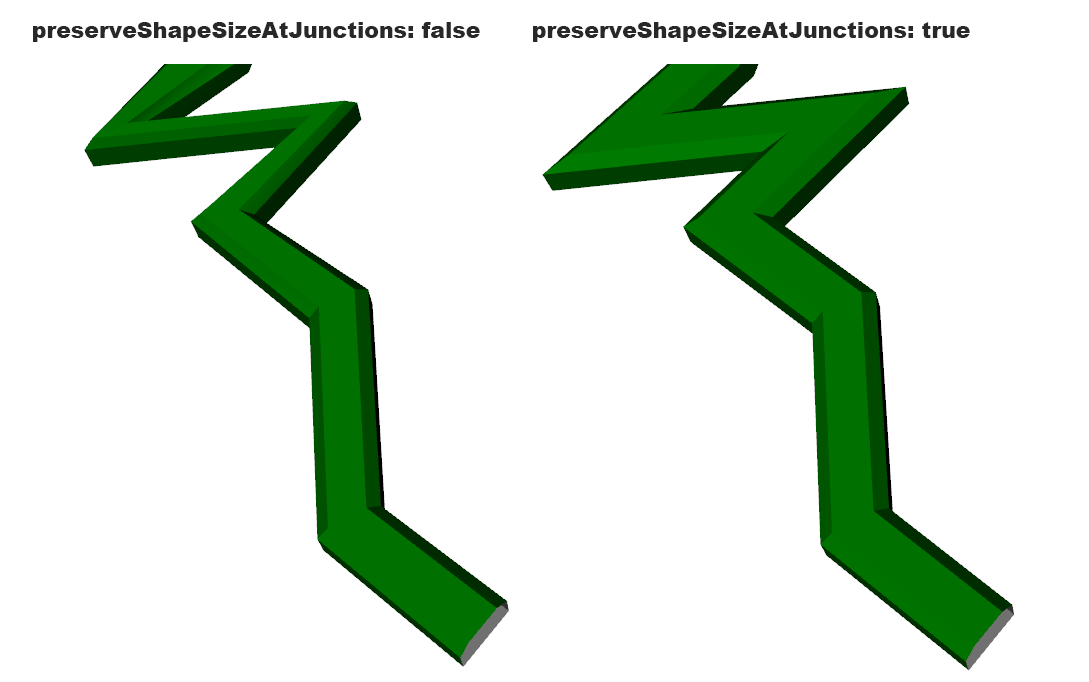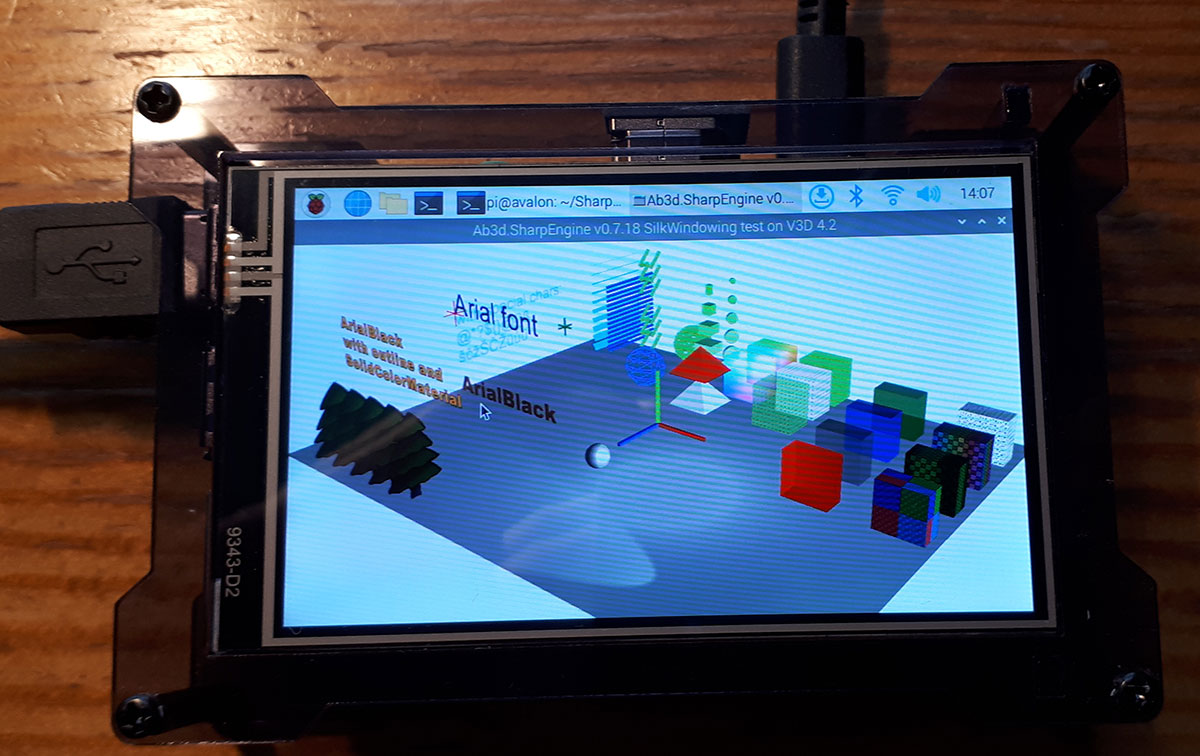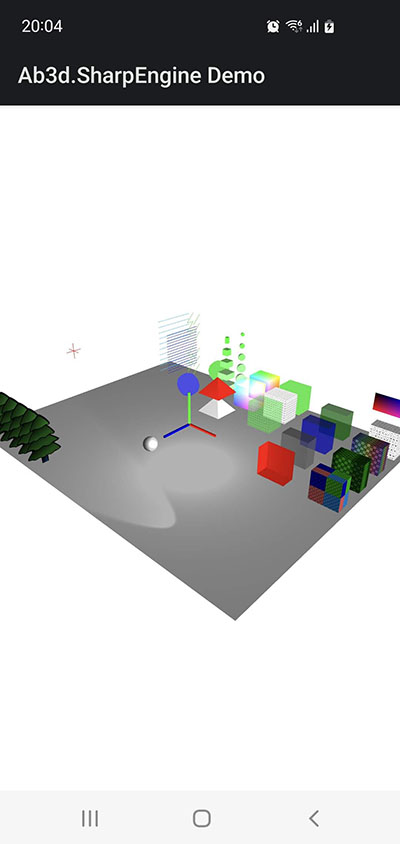I am happy to inform you that new versions of Ab3d.PowerToys and Ab3d.DXEngine libraries have been published.
This is a maintenance release with many improvements, fixes, and some new features.
The most interesting new feature in the Ab3d.DXEngine is added support for XRayEffect. The XRayEffect can render objects that look as they would be photographed by an x-ray. This can be useful when you work on a complex model with many parts and want to select one part while the other parts are just barely visible. In that case it is possible to make other parts semi-transparent. Another option that is available with the new version is to use the new XRayEffect or XRayMaterial. This works especially well when showing models with many triangles and with curved shapes. See example (this is a screenshot from slightly modified XRayEffect sample):

The new XRayEffect can be also used in the updated "Model Viewer" sample in the Ab3d.DXEngine samples (to use it check the new "Use X-Ray material" CheckBox in the second tab).
Another new feature can be used by those who use object instancing to render thousands of objects and want to do fast hit testing on the instanced objects. In this case, the new version allows rendering instance id bitmap from instanced objects. This generates a bitmap where colors represent the ids of the instances. By checking the color at a specific pixel, you can get the instance id that was rendered at that screen coordinates. This can also be used to do a rectangular selection or selection of the instance around the mouse cursor.
Also, the standard RenderToBitmap method got an improvement. With the new version it is possible to get direct access to the memory of the rendered bitmap. This way you can reuse the WritableBitmap or use any other method of using the rendered image. This is very useful when you are calling RenderToBitmap method very often because you can optimize and reuse the used objects (before a new WritableBitmap object was created on each call of RenderToBitmap method and this could generate many objects on the large memory heap).
The new version also improves stability in case of disconnecting an external monitor. Stability is also improved in some cases when rendering through a remote desktop.
The previous version introduced two-sided material that doubles the performance of rendering models that had the same front and back side materials. But this did not work in all the cases. This version fixes this issue.
There are also some other fixes and improvements. See the full list here: https://www.ab4d.com/DXEngine-history.aspx
The Ab3d.PowerToys library also got a few new features and improvements.
One interesting new feature is an improved algorithm for extruding a shape along a path. Now you can use two new options. One is to preserve the size of the shape at junctions and the other is to preserve the orientation of the shape's Y direction. See screenshot (the right side shows the extruded model using the new option):

The new version of the library also comes with an updated Assimp importer and exporter. It now supports reading embedded textures and saving textures into fbx and glft files. There is also a new native Assimp library v5.2.3 that should improve the accuracy of importing and exporting files (https://github.com/assimp/assimp/releases/tag/v5.2.3)
To see the full list of changes see the change log here: https://www.ab4d.com/PowerToys-history.aspx
You can get the new version by updating the NuGet packages or by downloading the new evaluation or commercial version from your User Account web page. Note if you are using libraries from NuGet and you have recently renewed the updated subscription, then you will probably need to generate a new license activation code for the new version to work (this code can be generated from your User Account web page).
The list of new features is not as long as with some previous versions. The reason for this is that a lot of development effort is now spent on the new Vulkan based rendering engine (Ab3d.SharpEngine). This new engine is progressing very well. This engine will be fully cross-platform so the same code should be able to run on many different hardware devices. Recently we were able to run the code that works on Windows and desktop Linux on Raspberry Pi with a small touch screen attached - see photo:

Such a setup makes the engine great for controlling some industry machines or equipment.
The engine can also work on Android:

Many features from Ab3d.PowerToys and Ab3d.DXEngine were already ported to the new engine. But before releasing an alpha version, the core of the engine still needs some polishing and testing. I expect that the first alpha can be released in a month or two. The plan is to release a closed alpha version and later an open beta version. If you are interested in trying the new engine, please write me an email or feedback and you will be informed when the alpha version is available. This will allow you to test the engine on your hardware and on your devices. It will aso give you some influence on which features will make it to the first official and production-ready version.